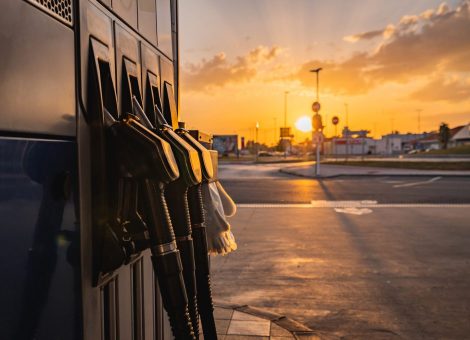Fuel price regulations in times of crisis and political flux ― what should you consider?
It’s a complex time to be a fuel retailer, nowhere more so than in Latin America. Political upheaval and a global health crisis have collided to create a period of fuel price regulation uncertainty. While some countries are deregulating their fuel pricing, others are considering increasing fuel price regulation.
Why is this happening?
Lockdowns brought about by the COVID-19 pandemic have caused businesses to reduce or cease trading, and a struggling economy means taxes go unpaid. Unpaid taxes create an additional financial burden on countries with existing debts. As debt obligations must be satisfied, governments must find a way to generate this income.
What does this uncertainty look like?
Mexico
We’ve written before about Mexico’s rapid deregulation plans that began around 2013. However, more recently, a change of government has seen the country’s current administration commit to increase regulations once more, and return state control to the Mexican energy sector. Permits for new fuel sites are being denied or revoked, and some existing operations are being closed down.
However, regulation increase isn’t going smoothly. During midterm elections in June 2021, the administration failed to secure a two-thirds majority. This, coupled with two regulatory bodies issuing contradictory information, means fuel retailers don’t know how to respond.
Peru
In Peruvian elections between candidates on far ends of the political spectrum, votes were coming in at almost 50/50, with each candidate on complete opposite ends of the regulation spectrum. There’s concern in the market that a win in favor of increased regulation will impact upstream operations, influencing import, export, and downstream operations.
Argentina
Between 2017 and 2019, Argentina’s inflation rate doubled to 53.8%, and a gasoline price freeze was effected periodically over 2019 and 2020 to help curb the effects on the exchange rate. Now in 2021, legislation is being drafted for long-term floor and ceiling limits to reduce volatility in the market as the country’s oil and gas industry pursues shale deposits.
Colombia
As the country experiences deep economic crisis following the COVID-19 pandemic, Colombia’s government proposed tax increases, sparking major protests. Alongside increases to income tax, food, and utilities, fuel taxes were proposed, then subsequently scrapped. Unsure what the government will propose next, retailers can’t make long term decisions, and expect more curve-balls as the situation continues.
_ _ _ _
So, with all this uncertainty across Latin America, what do you need to consider when operating in these, or similar, markets? When fuel price regulations are in flux, how should you respond?
And remember, not all markets will recover from a state of emergency like a pandemic at the same rate. When there’s a potential for future lockdowns in your market, how do you prepare?
Three actions to take in a time of regulation uncertainty
1. Use what you’ve already experienced to plan for the future
How likely is it that you could experience another lockdown in your market? Some areas continue to experience tides of decreasing and increasing movement restrictions. When you couple this with unpredictable regulatory changes, how do you respond?
The temptation could be towards a knee-jerk reaction ― “there’s a limited window to gain as much volume as possible, to achieve this, I should drop my fuel price below the competition”. This, of course, is the perfect way to trigger a “race to the bottom”, contributing to volatility in your market.
Instead, use all the data you have available to you to your best advantage. By this point retailers have likely experienced multiple lockdowns over 15-18 months, and learned lessons along the way. What are your goals during a lockdown? If on one of these occasions, your lockdown response worked well to achieve these goals, adopt this as your boilerplate pricing strategy. You can create an “event template”, much like you would do for seasonal holiday demand.
Use your data to understand patterns of consumer behaviour in the run up to a lockdown, as well as what happens when restrictions are reduced ― then agree in advance how, where, and when to apply this template as well as when to remove it. This will enable you to meet your volume or margin goals, while avoiding poor decision-making under pressure.
2. Optimize to make the most of what you’ve got
Regulatory unrest can cause things to come to a sudden halt. If permits for new fuel sites were revoked and half-built stations stand abandoned, how do you make the most of your existing network and pricing structure when no growth is foreseen? You must understand your existing sites and their relative strengths and weaknesses compared to the competition. Keep track of your sites’ performance and apply appropriate behavior to different segments to drive end results.
You’ll have sites across your network that will be high-priced star players with high-quality retail and convenience offerings, some with nothing to offer consumers aside from a low fuel price, and others operating with a similar offering to competitors. They shouldn’t all be treated the same. Use your data and market insight to identify which sites are which, and apply templates to each segment for an optimized view of your network and a fuel pricing structure that brings you the best return.
And is it possible to create more “star players”? This is about more than just pricing. Purposeful corporate citizenship can play a huge role in customer retention during times of crisis and upheaval. You could also consider alternative sources of income at your site. What are you offering to consumers that will influence them to choose you over the competition? For example, electric vehicle adoption is beginning to grow across Latin America, what could you offer the EV consumer aside from just charging points?
3. Remain agile and adaptable as uncertainty continues
If you don’t know how regulations and pandemic restrictions are going to evolve, can you plan ahead? What’s your strategy for returning fuel volume? Are you accurately tracking product costs as quickly as possible to earn the margin you need? How quickly can you adapt your prices as volumes change?
You should be looking at your past data to identify every possible market scenario, agree how pricing teams should respond, and create a template. No matter what situation arises, you can apply your agreed template. If you’ve already created templates for every potential scenario in your market, you’re always in a position to adapt and react sensibly to market changes, avoiding impulsive pricing decisions that will lead to volatility, brand damage, and potential price compliance violations.
The key takeaway
To succeed in a time of regulation-flux, fuel retailers must ensure they’re using accurate data and insights to truly identify costs and maintain profitability in potentially volatile environments. As markets evolve and begin to emerge from times of unrest, do you have the correct plans in place to reposition yourself as demand begins to return?
_ _ _ _
Are you operating fuel and convenience retail sites in Peru, Mexico, Argentina, or Colombia?
Contact Adam Quevedo, Kalibrate’s Key Account Manager for Latin America, to learn more about how you can use data to respond to these rapidly evolving markets. You can learn more about Adam and his expertise in this blog.
Read more articles about:
Fuel pricingSubscribe and get the latest updates
You may unsubscribe from our mailing list at any time. To understand how and why we process your data, please see our Privacy & Cookies Policy
Related posts
Fuel pricing
November 2025. Kalibrate's Canadian Petroleum Price Snapshot
Kalibrate conducts a daily survey of retail gasoline, diesel, propane, and furnace fuel prices in 77 Canadian cities....

Fuel pricing
October 2025. Kalibrate's Canadian Petroleum Price Snapshot
Kalibrate conducts a daily survey of retail gasoline, diesel, propane, and furnace fuel prices in 77 Canadian cities....

